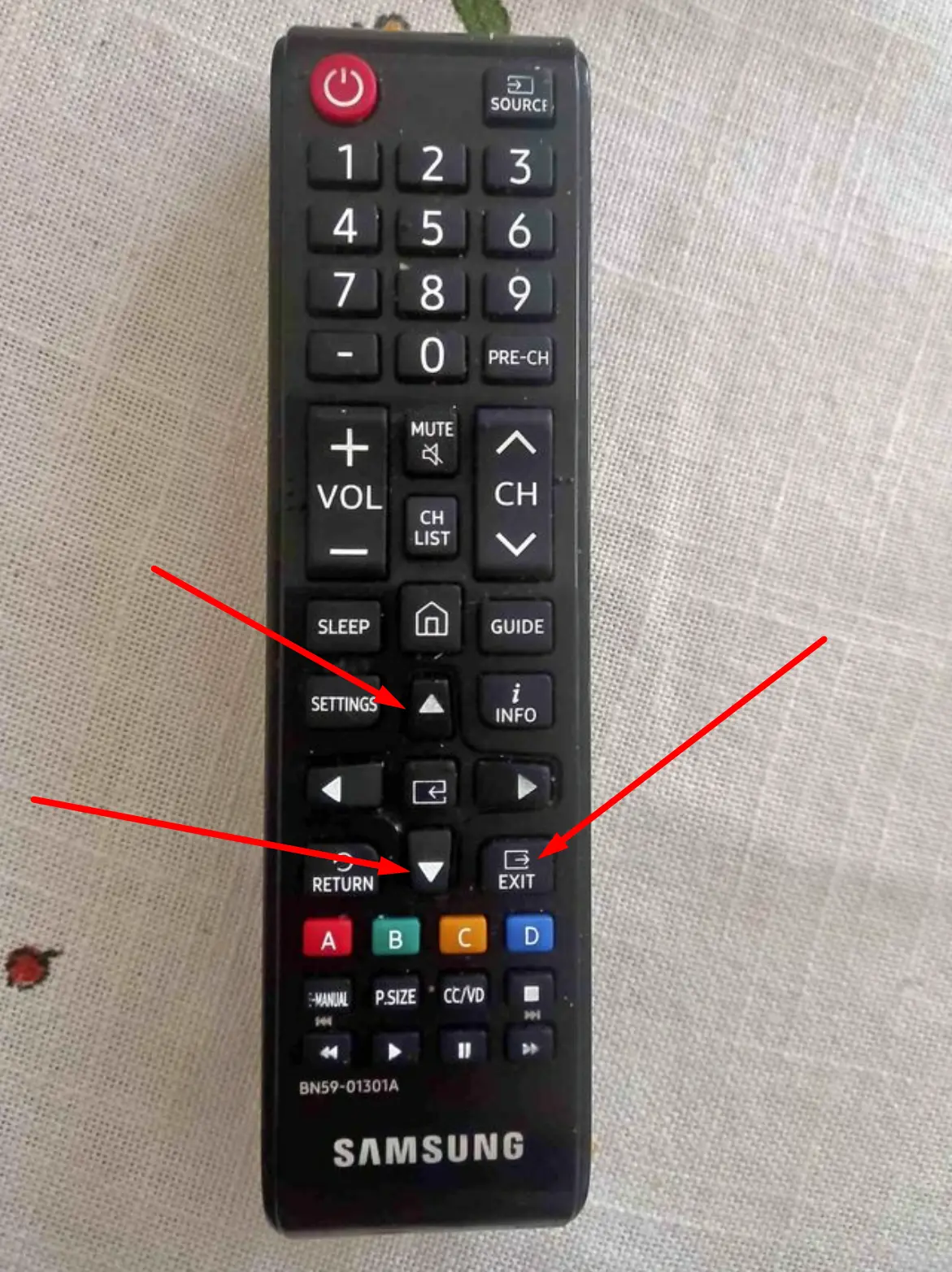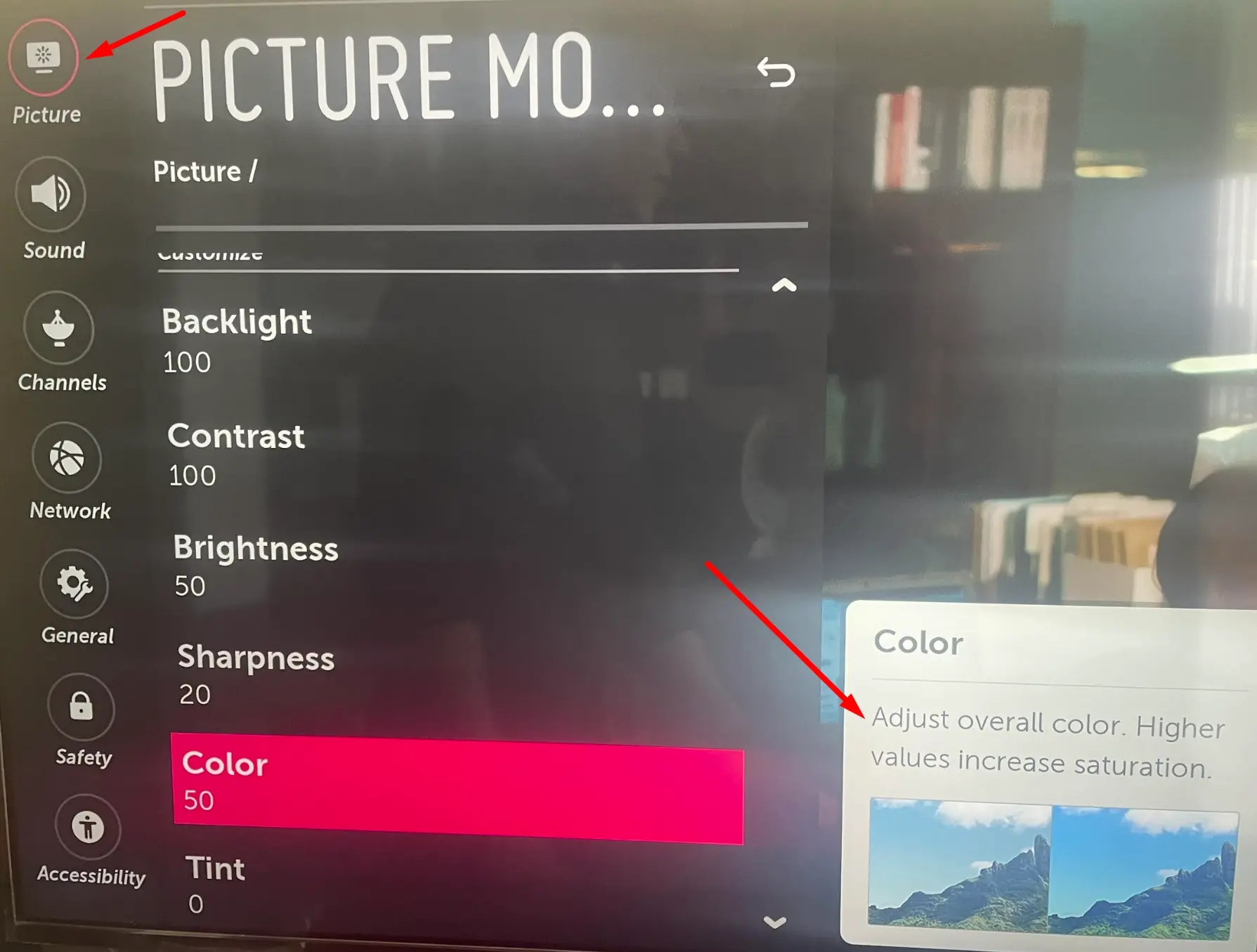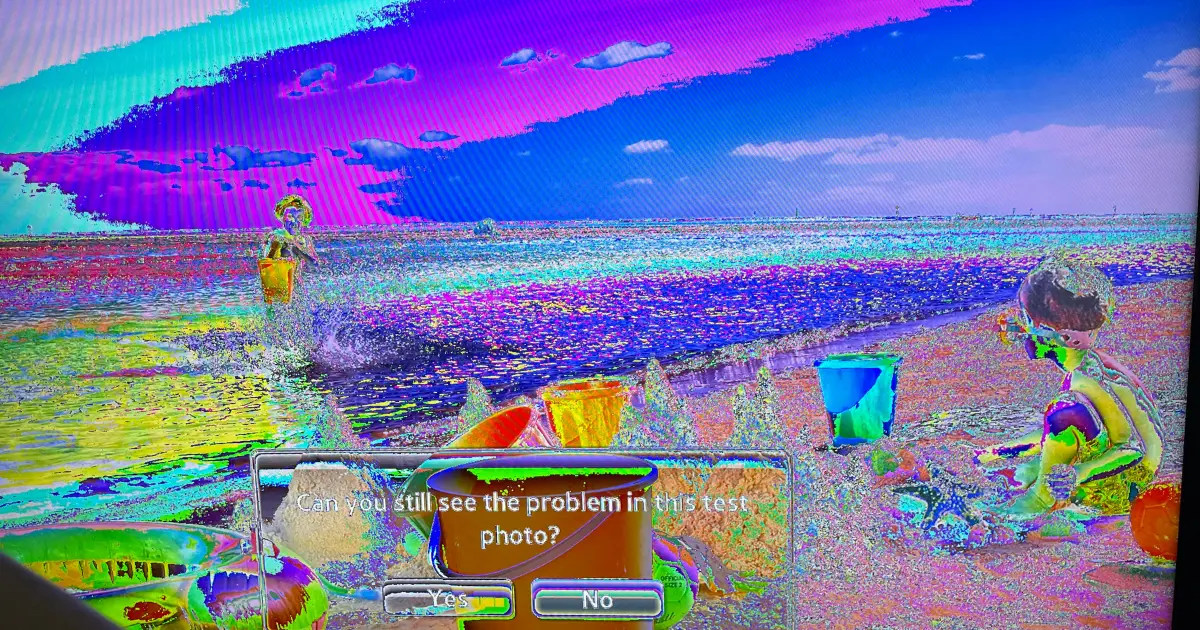I’ve owned several TVs over the years, and know that there are many different types of TVs available on the market, including CRT, LCD, and plasma screens. I have experienced my fair share of color problems with some of these TVs, including muddy, oversaturated, or strange shades of color, which I eventually learned were the result of my misuse of the TV’s built-in color settings.
However, I have also encountered more serious color problems that were caused by screen damage or defects in internal components. I remember one time when my TV had a strange blue tint that made everything look unnatural. After researching online, I found out that this was likely due to a faulty internal component, and fixing it would have been too expensive. I ultimately decided to purchase a new TV.
If your TV colors issues look anything like the image below, the first solution to try would be to unplug your TV for one to two minutes and plug it back in.

Through my experiences with various TV color problems, I have learned the importance of properly adjusting the TV’s color settings and recognizing when a color problem may be too severe to fix.
Other Causes and Fixes of Color Problems on TVs
Before we proceed…
A note of warning: It is crucial to exercise extreme caution when dealing with electrical elements, as they can cause severe injury or even death. Attempting to fix an electrical issue without the presence of a professional or without appropriate safety gear is highly discouraged. Please prioritize your safety and seek assistance from a qualified expert.
TV in Service Mode
Your TV could be in service mode, where it circulates through a full-screen display of red, green, blue, white, and partially white to check for inactive pixels. If this is the case, the screen color is simply a test pattern. You might want to reset the EEPROM to fix it.
To reset the EEPROM, unplug the TV power cord from the wall and press and hold the power button on the TV (not the remote control) for up to 20 seconds. Plug the TV set back in and try to power it up again.
Another option is to long press the ‘EXIT’ button on your remote control or press the Cursor Arrows ‘Up’ then ‘Down’ on your remote control and unplug the power, then plug it back in.

If none of these methods work, consult the TV’s operation manual to learn how to reset the TV. If you’re still unable to solve the problem, your TV’s EEPROM might have failed, and it’s time to call in a professional or buy a new TV.
TV Color Settings
Color problems on all types of TVs are often due to poor image settings. In this case, the user only needs to readjust the color settings on the TV. Start by going to the TV Settings.
To desaturate pictures on your TV, use the arrow keys on your remote to navigate to the “Picture” or “Display” settings option. Once there, look for the “Color” or “Saturation” option and decrease the value until you achieve the desired level of desaturation. Alternatively, some TVs have a “Black and White” or “Grayscale” picture mode that removes all color from the image, which you can try selecting.

Desaturate the color settings until the TV appears in black and white. Adjust the contrast so that white and black are distinguished, and adjust the brightness so that black is darker than gray.
Increase the sharpness completely, then decrease it until the halo around the lines and letters disappears. If possible, use the calibration tools (simple display of color bars).
LCD Color Problems
LCD monitors work by recalibrating the molecular structure of crystals to create color displays. However, they rely on a single pixel to provide the entire image. If there is a manufacturing defect or the transistor is faulty, the pixel will die, resulting in a black colorless dot on the screen.
Fast movements on the screen, such as quick animations in video games, can cause temporary blurring of colors, which is called “ghosting”. Dull, blurry colors can also be due to improper resolution settings.
For example, if the channel you’re viewing is outputting a 1080p resolution, your TV should be set to display this resolution instead of another resolution such as 720p or 480p.
To fix these issues, try restarting your TV first. Turn off the TV and unplug the power cord, keep the TV unplugged for 2 minutes, and then plug it back in and turn it on to check its status. If the issue persists, you may need to seek professional servicing.
OLED Color Problems
OLED (Organic Light-Emitting Diode) TVs are known for their incredible picture quality, but they too have their color problems. One of the most common issues is color banding, which is when color gradients appear as visible bands instead of a smooth transition.
To fix color banding issues in OLED TVs, make sure that the TV is set to output the correct bit depth. Most OLED TVs are capable of 10-bit or 12-bit color depth, which provides a smoother gradient transition.
Plasma Color Problems
Plasma displays use small cells of charged ionizing gas to create color images. Like LCD TVs, plasma TVs can have color problems if they are not set to the proper resolution. They can also display blurry color trails or unnatural shadows during rapid movements on the screen.
Under strong pressure, a multicolored sunburst-like pattern may appear on the screen, which is called a “burn-in”. Burn-in occurs when static objects from the previous display, such as channel watermarks and video game scales, appear on the current display. To avoid burn-in, make sure to turn off the TV or switch to a different channel when you’re not actively watching it.
If you encounter any of these color problems in your flat-panel TV, try the solutions listed above. If the issues persist, you may need to seek professional servicing.
CRT Color Problems
CRT televisions, or traditional box televisions, use controlled projections of red, green, and blue to produce images. However, poor connection to an external display source or failure of the TV’s chroma decoder can cause one primary display color to overwhelm the others.
A weak signal or defective chroma chip or chip connection can cause a completely colorless black-and-white display of a color broadcast. In some cases, cathode ray tube failure can also lead to intermittent fading colors.
Television Fault
If the color issue is not caused by poor connections or settings, it could be a serious problem with the set. For example, if the entire image is green, it could be a malfunction of one or more “guns” that point the electrons at the color screen.
Damage to the red and blue guns, which process red, blue, and green, can cause the screen to remain green. Magnets near the screen, such as unshielded speakers, can cause this damage, which can either be permanent or reversible. If this is the case, it’s best to use a professional repair service or consider buying a new set.
Broadcast Signal Source Issues
Sometimes, the problem isn’t with the TV at all. Issues with the broadcast signal source, such as Cable/Satellite box, IPTV, or other devices like a DVD player, can cause color issues.
To troubleshoot, turn off any electrical or battery-operated devices that might be creating radio frequency (RF) interference. If you’re using an antenna, broadcast signals reflected by nearby tall buildings may cause ‘ghosting’ in the picture, so adjust the antenna direction and location.
TV Wiring Issues
Improper wiring or voltage can cause TV color issues. If the electrical outlet is wired incorrectly or not producing the proper voltage for your TV, it can cause problems.
Similarly, a faulty surge protector or extension cord can also be the culprit. To verify if this is the issue, try plugging your TV power cord into a different electrical outlet.
TCON Board Failure

If your TV is flashing colors like red, blue or green, one possible cause could be a malfunctioning Tcon board. The Tcon board, also known as the timing control board, is responsible for interpreting the video signal from the TV’s main board and generating signals that control the pixels on the screen.
If the Tcon board fails, it can result in various display problems, including flashing colors, distorted images, or a blank screen. If you suspect that your TV’s Tcon board has failed, you may need to replace it.
It’s recommended to consult with a professional TV repair technician to diagnose the issue and ensure that the Tcon board is indeed the root cause of the problem.
